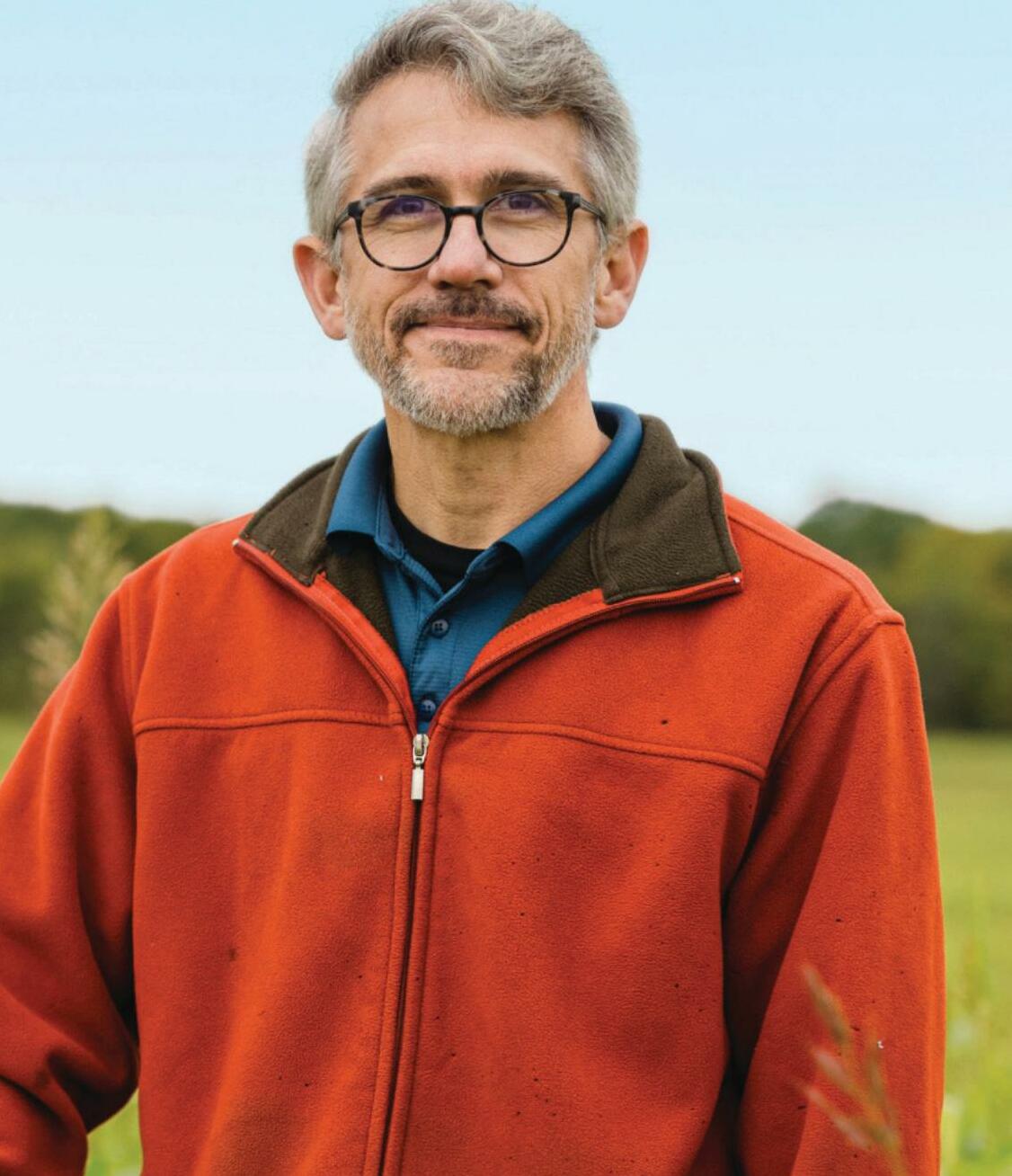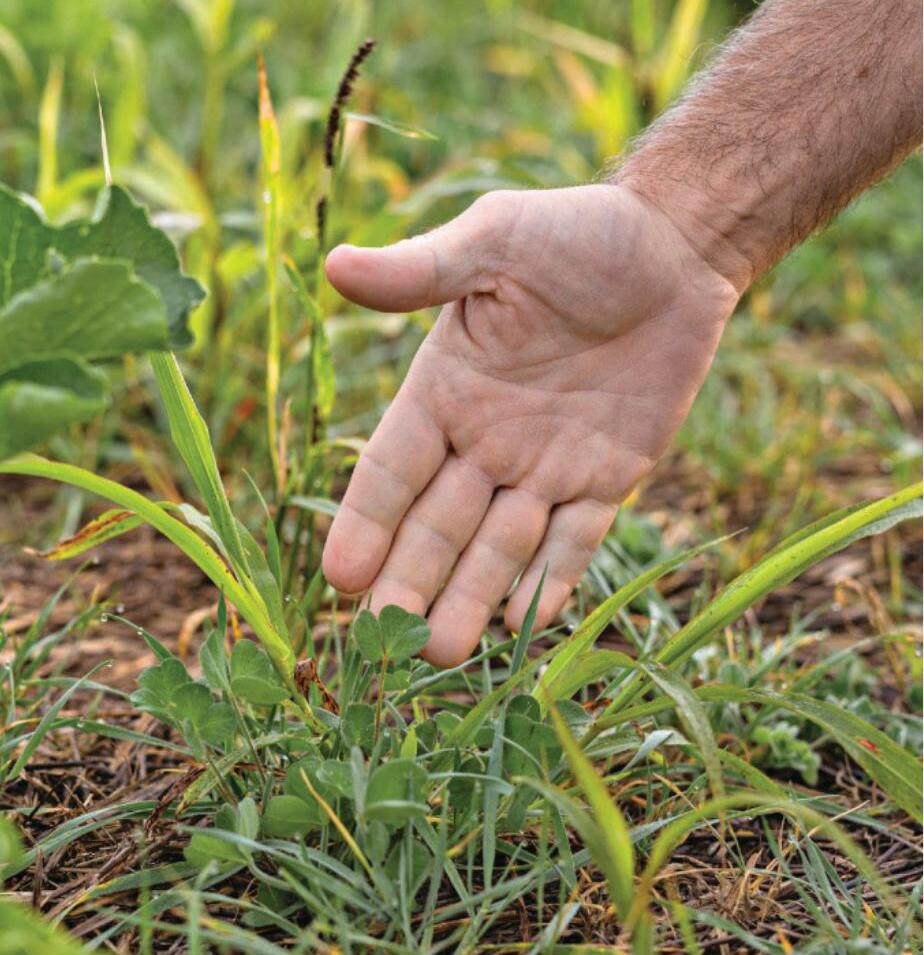Try GOLD - Free
CUT COSTS, NOT YIELD
Successful Farming
|December 2023
When soil health improves, fewer inputs may be needed.

FARM SCHOOL
An educational series for farmers who want to take their skills to the next level.
Profitability can increase when inputs are reduced and yields can be maintained. The key is to first increase soil health.
Near Carroll, Ohio, Jay Brandt continues a legacy built by his late father, David Brandt, an iconic farmer who started no-tilling and growing cover crops in the 1970s. Today, on the farm's 1,000 acres of corn, soybeans, and wheat, Jay Brandt uses 50% of the synthetic nitrogen fertilizer used by conventionally farming neighbors, he says, and 60% to 70% of the herbicide.
Despite these reductions in inputs, yields and profit hold strong. "We're in the yield average for our area," says Brandt, "and profitability is good because of the crop rotation and because our cost of production is very low due to our reduced use of inputs."

No-till farmer and cover crop grower Sonny Price has experienced similar results on his 6,600-acre farm near Dillon, South Carolina, where he grows corn, beans, soybeans, cotton, winter wheat, and cover crops. In 2016 and 2017, Price stopped applying phosphorus, potash, and lime despite general assumptions that yields couldn't be sustained in his region without those inputs.
But yields have maintained and even increased, while the reduction in inputs brings significant savings. "In 2017, Price was saving $50 an acre just by not applying lime, a savings that easily paid the cost of his cover crop seed," says University of South Carolina researcher Robin (Buz) Kloot. At 2017's prices, the savings from not applying phosphorus and potassium amounted to another $50 to $70 an acre, adds Kloot, generating a total savings of $120 an acre.
Cut Costs 101: No-Till, Cover Crop Combo
This story is from the December 2023 edition of Successful Farming.
Subscribe to Magzter GOLD to access thousands of curated premium stories, and 10,000+ magazines and newspapers.
Already a subscriber? Sign In
MORE STORIES FROM Successful Farming

Successful Farming
VIP: Very Important Poultry
Minnesota producer John Zimmerman raised last year's Presidential Flock, helping keep the state's turkey legacy strong.
3 mins
November 2025

Successful Farming
Get to Know Your Bull
Winter is your bull's offseason, so now is the time to assess his health and determine if he will keep his position or is ready for retirement.
2 mins
November 2025

Successful Farming
Managing Mastitis
Non-antibiotic product helps manage dairy herd mastitis issues.
4 mins
November 2025

Successful Farming
Autonomous tractors are finally hitting the fields.
After years of research and development, autonomous technology has arrived.
5 mins
November 2025

Successful Farming
Mike Koehne
This first-generation Indiana farmer built a global business from scratch.
3 mins
November 2025

Successful Farming
Funding Pork Sustainability
Pork producers can get paid for adopting sustainable practices.
4 mins
November 2025

Successful Farming
Offseason Care Pays Off
Follow these seven steps to winterize your equipment now — saving time, money, and headaches next spring.
4 mins
November 2025

Successful Farming
Perennial Cover Crops
Is perennial ground cover a good alternative to annual cover crops?
4 mins
November 2025

Successful Farming
Access Tools Quickly With Storage Racks
Save time in the shop by building these storage racks to keep your tools visible and accessible.
2 mins
November 2025

Successful Farming
How to Support Up-and-Coming Agriculturists
With startup costs on the rise, a study conducted by the Coalition to Support lowa's Farmers provides insights on the obstacles facing tomorrow's farmers.
2 mins
November 2025
Translate
Change font size

